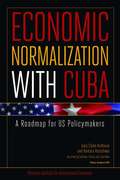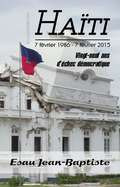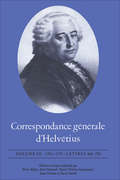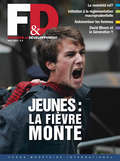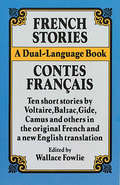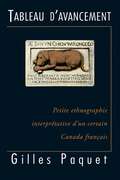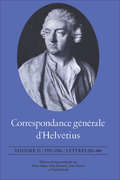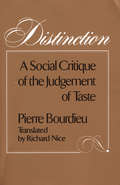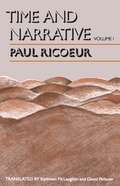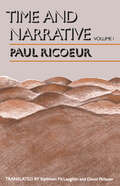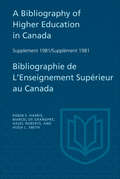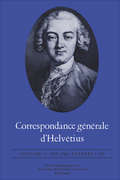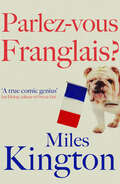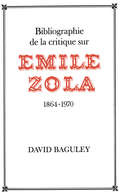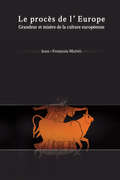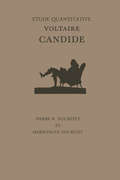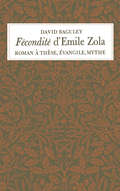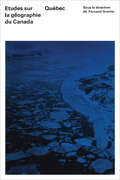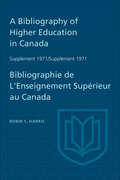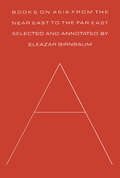- Table View
- List View
Economic Normalization With Cuba: A Roadmap For Us Policymakers
by Gary Clyde Hufbauer Barbara KotschwarGary Clyde Hufbauer, Reginald Jones Senior Fellow at the Peterson Institute for International Economics since 1992, was the Maurice Creenberg Chair and Director of Studies at the Council on Foreign Relations [1996-98), the Marcus Wallenberg Professor of International Finance Diplomacy at Georgetown University (1985-92), senior fellow at the Institute (1981-85), deputy director of the International Law Institute at Georgetown University 0979-81), deputy assistant secretary for international trade and investment policy of the US Treasury (1977-79), and director of the international tax staff at the Treasury (1974-76). Among his numerous coauthored books are Local Content Requirements: A Global Problem (2013), The United States Should Establish Permanent Normal Trade Relations with Russia (2012), Figuring Out the Doha Round [2010], and Economic Sanctions Reconsidered, 3rd edition (2007). Book jacket.
Haïti 7 février 1986 - 7 février 2015: Vingt-neuf Ans D'echec Democratique
by Esau Jean-Baptiste<p>Au départ du Président á vie Jean-Claude Duvalier le 7 février 1986, le peuple avait eu confiance dans le processus de transition démocratique en Haïti. Or, vingt-neuf ans après, la déception est donc énorme. Force est de constater que le pays reste à la case de départ. La démocratie continue encore à chercher sa voie en Haïti. Est-ce la transition continue qui fait d’Haïti un ?tat en faillite ou son État de défaillance qui permet à cette transition de n’en plus finir ?</p><p>La transition démocratique de l’après 1986 a donné suite à une série de gouvernements éphémères, de coups d’état, d’assassinats politiques, des forces d’intervention étrangères et, des élections controversées. De ces élections sont issus des élus à tous les niveaux de la vie politique qui, malheureusement, n’ont apporté aucun soulagement aux maux qui rongent le pays, si ce n’est des opportunistes et des avares du pouvoir.</p><p>Ainsi, les différents gouvernements qui se sont succedés de 1986 á 2015 ont tous, piteusement, échoués. Ils le sont du fait qu’ils sont incapable de comprendre que le soulèvement qui a conduit au départ du dictateur le 7 février 1986 était beaucoup plus profond qu’un simple changement de gouvernement. Dans leurs revendications, les masses défavorisées étaient dans les rues pour réclamer d’un leader moderne, avec de grandes visions, un nouveau contrat social. En un mot, le peuple se voulait d’un leader capable de comprendre leurs aspirations politiques, économiques et sociales. Alors que aujourd’hui encore « la plus grande confusion perdure et les problèmes d’Haïti deviennent plus complexes et plus difficiles que lors du départ de Jean-Claude Duvalier ».</p>
Correspondance générale d'Helvétius, Volume III: 1761-1774 / Lettres 465-720
by David Smith Alan Dainard Claude Adrien Helvétius Jean Orsoni Peter Allan Marie-Thérèse InguenaudThe first two volumes of the Correspondance générale d'Helvétius inspired international acclaim. Now the third volume offers us further insight into a variety of aspects of life in eighteenth-century France.Claude-Adrian Helvétius (1715-71) was a wealthy and high-ranking member of French society. He was acquainted with the leading political and social figures of his time and, through family, with the court and government which he occasionally served in a diplomatic capacity. Philosopher, encyclopedist, and author of the explosive De l'Esprit, he and his wife, Anne Catherine de Ligneville, corresponded with the great and influential throughout Europe.The letters in this volume were written between 1761 and 1774, a period in which Helvétius enjoyed the fruits of his fame, travelled to England (1764) and Prussia (1765), and produced two books, Le Bonheur and De l'homme, which were published after his death.
Mozart Violin Sonatas (Complete Mozart Edition)
by Alec Hyatt King Jean-Victor Hocquard Uwe Jüttner Carlo VitaliThis is the text of the 82-page Compact Disc booklet which accompanies the Mozart Violin Sonatas volume of the Philips Complete Mozart Edition. It begins with a complete table of contents listing all the sonatas and tracks and is followed by essays in English, German, French and Italian discussing the works. The essay in English, German, and Italian is authored by Alec Hyatt King. The essay in French is by Jean-Victor Hocquard. The booklet is appropriately indexed for DAISY navigation. This lovely music is available on disc from many artists and is also available on Apple Music, YouTube, Spotify, and other digital music services. Whether you are a CD collector, a listener on a digital service or a performer, this booklet will help you gain a greater understanding and appreciation of this music.
Finances & Développement
by International Monetary FundA report from the International Monetary Fund.
French Stories/Contes Francais: A Dual-Language Book (Dover Dual Language French)
by Wallace Fowlie"The selections are good and the translations are excellent."-Germaine Brée, New York UniversityDrawn from two centuries of French literature, these superb selections by ten great writers span a wide variety of styles, philosophies, and literary creeds. The stories reflect not only the beliefs of various literary schools, but the preoccupations of French civilization, at the various times of their composition, with the metaphysical and psychological problems of man. Contents include Micromégas (Voltaire), La Messe de l'Athée (Honoré de Balzac), La Légende de Saint Julien l'Hospitalier (Gustave Flaubert), Le Spleen de Paris (Charles Baudelaire), Menuet (Guy de Maupassant), Mort de Judas (Paul Claudel), Le Retour de l'Enfant Prodigue (André Gide), Grand-Lebrun (François Mauriac), Le Passe-Muraille (Marcel Aymé), and L'Hôte (Albert Camus). Students of French, or those who wish to refresh their knowledge of the language, will welcome this treasury of masterly fiction. The selections are arranged chronologically, allowing the reader to witness the development of French literary art -- from Voltaire to Camus. Excellent English translations appear on pages facing the Original French. Also included are a French-English vocabulary list, textural notes, and exercises.
Les followers de Megan: Un guide spirituel, une tigresse fantôme et une mère effrayante! (La série Megan #5)
by Owen JonesLes followers de Megan Un guide spirituel, une tigresse fantôme et une mère effrayante! Megan est une fille de 13 ans avec des pouvoirs surnaturels. Certains d’entre eux ne sont encore que partiellement développés et d’autres fonctionnent, mais elle ne sait pas comment les utiliser pour le moment. Ses plus gros problèmes du moment sont, d’une part, de trouver un professeur qui peut lui montrer comment les utiliser proprement, et d’autre part, elle ne connaît personne qui connaisse quoi que ce soit par rapport aux pouvoirs surnaturels. En fait, sa mère est violemment contre le surnaturel, comme c’était le cas de sa mère avec elle-même. Les seules personnes qui semblent partantes pour l’aider sont mortes, même si cela ne fait aucune différence pour Megan. Elle accueille leur aide à bras ouverts. Les followers de Megan fait référence à ses abonnés sur Internet. Depuis qu’elle a tout juste 13 ans, ses parents et les sites multimédias lui permettent désormais d’utiliser ces derniers. Alors, elle s’ouvre des comptes sur Twitter, Facebook et LinkedIn. Wacinhinsha lui enseigne la communication et la façon dont cela peut être perçu par un guide spirituel.
Tableau d'avancement: Petite ethnographie interprétative d'un certain Canada français (Collection Gouvernance)
by Gilles PaquetCe tableau d’avancement examine le Canada français de la dernière moitié du XXe siècle et propose quelques repères utiles, souligne certains enlisements, avancées et retards, et cherche à comprendre son évolution malaisée à travers trois grandes perspectives : celle de chefs politiques qui l’ont orienté, celle d’intellectuels influents qui l’ont interprété, et celle de certaines institutions qui en ont révélé la dynamique. Le fil rouge qui lie ces vignettes et sert de fil conducteur est l’ombre de la Révolution tranquille qui a brouillé la vue de bien des observateurs. L’auteur est d’accord avec Gilles Vigneault quand il dit « Nous avons mal regardé. Nous avons mal écouté ». Il propose ici une autre manière de voir, une autre forme d’écoute. Publié en français
Correspondance générale d'Helvétius, Volume II: 1757-1760 / Lettres 250-464
by David Smith Claude Adrien Helvétius Jean Orsoni Peter Allan Allan DainardThis second volume of the Correspondance générale d'Helvétius covers the period of the publication and reception of Helvétius' controversial first work, De l'Esprit (1758). It begins with a letter of January 1757, in which Helvétius recounts the attempt by Damiens on the life of Louis XV, and ends in December 1760 when the author, having been attacked on the stage of the Théatre-Francais but eulogized in foreign journals, is contemplating voluntary exile. In the meantime De l'Esprit provoked an uprecedented outcry from the court and from the religious and civil authorities. Denigrated as the epitome of all dangerous philosophic trends of the age, condemned as atheistic, materialistic, sacriligious, immoral, and subversive, it enjoyed an immense succes de scandale. Rather than examining the puzzles and paradoxes which surround the affaire de l'Esprit, this volume presents the documents upon which solutions may be based. Helvétius' own letters, often written hastily, under stress, and in fear they might be opened by the Cabinet noir, are less revealing than the letters between other protagonists in the affaire: the Cardinal de Bernis and the Duke de Choiseul, Jean-Omer Joly de Fleury, Malesherbes, Saint-Florentin, Tercier, and Louis xv himself. It is these letters, together with the appendixes containing edicts, retractions, an condemnations that shed new light not only on the development of the affaire but also on the complex workings of the ancien regime
Distinction: A Social Critique of the Judgement of Taste (Routledge Classics Ser.)
by Pierre BourdieuNo judgment of taste is innocent. In a word, we are all snobs. Pierre Bourdieu brilliantly illuminates this situation of the middle class in the modern world. France’s leading sociologist focuses here on the French bourgeoisie, its tastes and preferences. Distinction is at once a vast ethnography of contemporary France and a dissection of the bourgeois mind. In the course of everyday life people constantly choose between what they find aesthetically pleasing and what they consider tacky, merely trendy, or ugly. Bourdieu bases his study on surveys that took into account the multitude of social factors that play a part in a French person’s choice of clothing, furniture, leisure activities, dinner menus for guests, and many other matters of taste. What emerges from his analysis is that social snobbery is everywhere in the bourgeois world. The different aesthetic choices people make are all distinctions—that is, choices made in opposition to those made by other classes. Taste is not pure. Bourdieu finds a world of social meaning in the decision to order bouillabaisse, in our contemporary cult of thinness, in the “California sports” such as jogging and cross-country skiing. The social world, he argues, functions simultaneously as a system of power relations and as a symbolic system in which minute distinctions of taste become the basis for social judgment. The topic of Bourdieu’s book is a fascinating one: the strategies of social pretension are always curiously engaging. But the book is more than fascinating. It is a major contribution to current debates on the theory of culture and a challenge to the major theoretical schools in contemporary sociology.
Time and Narrative, Volume 1
by Paul Ricoeur David Pellauer Kathleen MclaughlinTime and Narrative builds on Paul Ricoeur's earlier analysis, in The Rule of Metaphor, of semantic innovation at the level of the sentence. Ricoeur here examines the creation of meaning at the textual level, with narrative rather than metaphor as the ruling concern. Ricoeur finds a "healthy circle" between time and narrative: time is humanized to the extent that it portrays temporal experience. Ricoeur proposes a theoretical model of this circle using Augustine's theory of time and Aristotle's theory of plot and, further, develops an original thesis of the mimetic function of narrative. He concludes with a comprehensive survey and critique of modern discussions of historical knowledge, understanding, and writing from Aron and Mandelbaum in the late 1930s to the work of the Annales school and that of Anglophone philosophers of history of the 1960s and 1970s. "This work, in my view, puts the whole problem of narrative, not to mention philosophy of history, on a new and higher plane of discussion."--Hayden White, History and Theory "Superb. . . . A fine point of entrance into the work of one of the eminent thinkers of the present intellectual age."--Joseph R. Gusfield, Contemporary Sociology
Time and Narrative, Volume 1 (Time and Narrative)
by Paul Ricoeur David Pellauer Kathleen McLaughlinTime and Narrative builds on Paul Ricoeur's earlier analysis, in The Rule of Metaphor, of semantic innovation at the level of the sentence. Ricoeur here examines the creation of meaning at the textual level, with narrative rather than metaphor as the ruling concern. Ricoeur finds a "healthy circle" between time and narrative: time is humanized to the extent that it portrays temporal experience. Ricoeur proposes a theoretical model of this circle using Augustine's theory of time and Aristotle's theory of plot and, further, develops an original thesis of the mimetic function of narrative. He concludes with a comprehensive survey and critique of modern discussions of historical knowledge, understanding, and writing from Aron and Mandelbaum in the late 1930s to the work of the Annales school and that of Anglophone philosophers of history of the 1960s and 1970s. "This work, in my view, puts the whole problem of narrative, not to mention philosophy of history, on a new and higher plane of discussion."—Hayden White, History and Theory "Superb. . . . A fine point of entrance into the work of one of the eminent thinkers of the present intellectual age."—Joseph R. Gusfield, Contemporary Sociology
Cahier de retour au pays natal
by Aimé CésaireLe poème « Cahier d’un retour au pays natal » est un texte d’une quarantaine de pages rédigé en vers libres. Le « Cahier d’un retour au pays natal » est celui du retour à la Martinique, qui s’accompagne de la prise de conscience de la condition inégalitaire des Noirs. Il représente une dénonciation forte du racisme et du colonialisme.
La princesse Yennenga et autres histoires
by Roger Bila KaboreFidèle à la tradition orale du pays Mossi, Roger Bila Kaboré s'inspire des contes de l'Ouest africain pour mêler avec talent poésie et récits d'aventure. Belle amazone au grand cœur, la princesse, Yennega saura-t-elle honorer son père le Roi Soleil ? Mamadou parviendra-t-il à arracher sa bien-aimée des griffes du Maire de la Grande Clairière ? Comment le Prince Diabo Lampo pourra-t-il délivrer son village de la malédiction qui le frappe ? Les trois frères trouveront-ils la solution à leur énigme auprès de l'Imam Boubacar ?
A Bibliography of Higher Education in Canada Supplement 1981 / Bibliographie de l'enseignement supérieur au Canada Supplément 198
by Hugh Smith Robin Harris Marcel De Grandpre Hazel RobertsThe 1981 Supplement adds more than 3000 entries to the approximately 10,500 listed in the original volume and in the 1965 and 1971 Supplements. Like its predecessors, this volume provides a full list of the secondary sources related to Canadian higher education – books, articles, theses ,dissertations, and reports published from 1971 to 1980. The reporting, arrangement of entries, and overall organization of the material remains the same as in the 1971 Supplement.
Correspondance générale d'Helvétius, Volume I: 1737-1756 / Lettres 1-249
by David Smith Alan Dainard Claude Adrien Helvétius Jean Orsoni Peter AllanThis volume is the first of three in a complete critical edition of the letters of Claude-Adrien Helvétius (1715-71) and his wife, née Anne Catherine de Liginville (1722-1800). Though rank and wealth, Helvétius was acquainted with the leading political and social figures of his time, and, through family, with court and government which he occasionally served in a diplomatic capacity. Philosopher and author of the explosive De l'esprit, Helvétius corresponded with the great and the influential throughout Europe. His letters, and those of Mme Helvétius, provide insights into, and new information about, their lives and the political, social, and intellectual history of the eighteenth century. Volume I contains almost 250 letters written by or to Helvétius or his wife. Of these, the largest collections are those from Helvétius to Mme Helvétius, made available by his descendants, and letters from the future Mmem Helvétius to her aunt, Mme de Graffigny, which are at Yale University. Letters to or from third parties are also included. Much of this correspondence has never before been published. Correspondance générale d'Helvétius is fascinating to read; it is indispensable for future study of Helvétius' life and work and of Mme Helvétius' influence on her husband his his circle. This volume has a preface by Comte Charles-Antoine d'Andlau, a descendant of Helvétius, and an introduction by the editors setting out their editorial and critical principles and system of annotation. (University of Toronto Romance Series 41)
Parlez-Vous Franglais?
by Miles KingtonLe Français, c’est difficile. Difficile? C’est impossible. C’est maddening. C’est une peine dans le neck. Mais le Franglais est une doddle…Welcome back to the absurd yet joyful world of Miles Kington's legendary Franglais guides! C’est une des grande mixtures de l’histoire, comme gin et tonique, oeuf et bacon, ou les deux Ronnies. Cette combinaison de Français et Anglais vous permet une expérience mind-blowing.MAINTENANT UNE SCRATCH ET SNIFF ÉDITION EBOOK SPECIALE! CHOIX DE TROIS FLAVOURS: GAULOISE/VINAIGRETTE/TARTE TATINSi vous comprenez le blurb, essayez l’interieur.Vous ne serez pas le loser.Miles Kington was one of Britain’s most renowned and best loved journalists. Born in County Down, he grew up in Wales and was educated in Scotland, which was all a big mistake as he was actually English. A presenter, playwright, polymath and wit, he wrote columns for The Times, the Independent, Punch and The Oldie. His other acclaimed titles include Someone Like Me, How Shall I Tell the Dog? and The Franglais Lieutenant's Woman.
Bibliographie de la Critique sur Émile Zola, 1864-1970
by David BaguleyZola scholars and those whose work in other fields--literary, historical, sociological, or artistic--brings them into contact with Zola and his works have long felt the need for a survey for the large corpus of writings on this important, widely read author. This bibliography provides just such a survey, admirably complete and intelligently organized. Aided in his research by several collaborators and by a number of libraries throughout the world, David Baguley has compiled some 8000 items covering the period from the first reviews of Zola's early works to 1970. Although his work does not pretend to be exhaustive, it contains extensive coverage of studies in English, German, Polish, and Spanish, as well as French, as essential items in many other languages. The entries are arranged chronologically by years and, within each year, alphabetically by author. An introduction outlines aims, principles, and uses. Researchers will also find helpful the list of unpublished theses on Zola from various countries, the index of authors' names and names appearing in titles and notes, and the index of themes. The latter uses the number assigned to each of the entries to facilitate speedy location of materials on particular topics--e.g. Germinal studies, Zola and the theatre, the Dreyfus case, and so on. Wherever appropriate, annotation has been provided that indicates the language, content, importance, and viewpoint of the items. This bibliography will be an indispensable reference guide for Zola scholarship.
Le Procès de l'Europe: Grandeur et misère de la culture européenne (Philosophica)
by Jean-François MattéiL’Europe se trouve aujourd’hui en position d’accusée, souvent par les Européens eux-mêmes, du fait de sa prétention à l’universalité, de sa supériorité proclamée et de son arrogance intellectuelle. Qu’elle n’ait pas toujours été fidèle à ses principes, lors de la colonisation des autres peuples, ne met pourtant pas en cause sa légitimité. La critique de l’Europe n’est en effet possible qu’à l’aide des normes juridiques et des principes éthiques qu’elle a diffusés auprès de tous les peuples pour connaître le monde plutôt que pour le juger.Levinas n’avait donc pas tort de louer «la générosité même de la pensée occidentale qui, apercevant l’homme abstrait dans les hommes, a proclamé la valeur absolue de la personne et a englobé dans le respect qu’elle lui porte jusqu’aux cultures où ces personnes se tiennent et où elles s’expriment.» Il faut en prendre son parti : il n’y a pas plus d’égalité des cultures que de relativisme des valeurs. On ne saurait faire le procès de l’universel sans faire appel à la culture qui a donné cet universel en partage aux autres cultures.
Voltaire's Candide: Etude quantitative
by Marie-Paule Ducretet-Powell Pierre DucretetQuantitative studies furnish precise and complete numerical data about the nature of literary language and language in general. They provide the foundation for qualitative studies that can contribute to the analysis, interpretation and understanding of style, language, and ideas for a given period or author. This volume is a quantitative examination of Voltaire's Candide. It includes a word frequency dictionary, index verborum, and line concordance keyed to a text of Candide which is reproduced in the volume, as well as a lengthy introduction that describes and interprets the quantitative data. Linguists, statisticians, lexicographers, and literary scholars will find this work of interest, not only for the vital data that is supplies, but also for the methodology that underlies it.
Fecondite d'Emile Zola
by David BaguleyThis historical and critical study of Zola's Fécondité contributes much to an understanding of how the novel came to be written and of its achievements. Like Travail and Verité, the later books in the series Les Quatre Evangiles, Fécondité has not previously received significant critical attention. This study reveals and interprets the less obvious aspects of the work, its biblical and mythical themes, its sources and genesis. It also adds to our knowledge of Zola's later works through the examination of various ideological currents--particularly the impact of Malthusianism, its proponents and adversaries, and who among them Zola read in preparing this book. Fécondité deals with the particular problem of France's declining birth-rate at the end of the nineteenth century and, more generally, with the problem of decadence and cultural renewal. By the time that he wrote Fécondité, Zola had abandoned his naturalist aesthetic of scientific objectivity, if not also his working methods as a novelist. This study shoes how his didactic concerns continually asserted themselves in the structure and the use of rhetorical techniques in Fécondité. Specialists in Zola, and others more generally interested in the French culture of the late nineteenth century, as well as the particular demographic problems that Zola treats in the work, and the relationship of literature to primitive mythology, should find this study of particular interest.
Etudes sur la Geographie du Canada
by Fernand GrenierThe publication of the series, 'Studies in Canadian Geography,' by the organizers of the 22nd International Geographical Congress, introduces to the international community of geographers a new perspective of the regional entities which form this vast countries. These studies should contribute to a better understanding among scholars, students, and the people of Canada of the geography of their land. Geographical works embracing the whole of Canada, few in number until recently, have become more numerous during the last few years. This series is original in its purpose of re-evaluating the regional geography of Canada. In the hope of discovering the dynamic trends and the processes responsible for them, the editors and authors of these volumes have sought to interpret the main characteristics and unique attributes of the various regions, rather than follow a strictly inventorial approach. In preparing this volume on Quebec, the contributors have looked at the evolution and present patterns of the ecumene of southern Québec, rural and urban Québec, and the dynamic biogeography of Québec.
A Bibliography of Higher Education in Canada Supplement 1971 / Bibliographie de l'enseignement superieur au Canada Supplement 1971
by Robin HarrisThe 1971 Supplement adds some 3,500 entries to the approximately 7,000 listed in the original volume and the 1965 Supplement. Like its predecessors this volume provides a full list of the secondary sources related to Canadian higher education – books, articles, theses, dissertations, and reports published from 1964 to 1969. The reporting and arrangement of entries remains the same in the Supplement, but changes have been made in the overall organization of the material. New divisions have been created, more than a dozen sections have been subdivided, and a substantial number of new sections have been added. (Studies in Higher Education 5)
Books on Asia from the Near East to the Far East
by Eleazar BirnbaumThis is a selected, annotated list of some 2,000 books on Asia in English and French currently in print, chosen with the aim of providing a long-term historical perspective for the general reader. The list is presented in four main parts: Asia as a whole; the Islamic world; India, South and Southeast Asia; the Far East. Subdivisions cover such topics as: general and reference works; history, social science, and law; history of literature; literature in translation; religion and ideas; arts, crafts, architecture, and science; and the lands in modern times.
